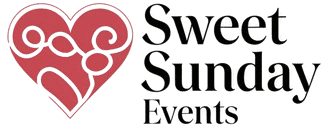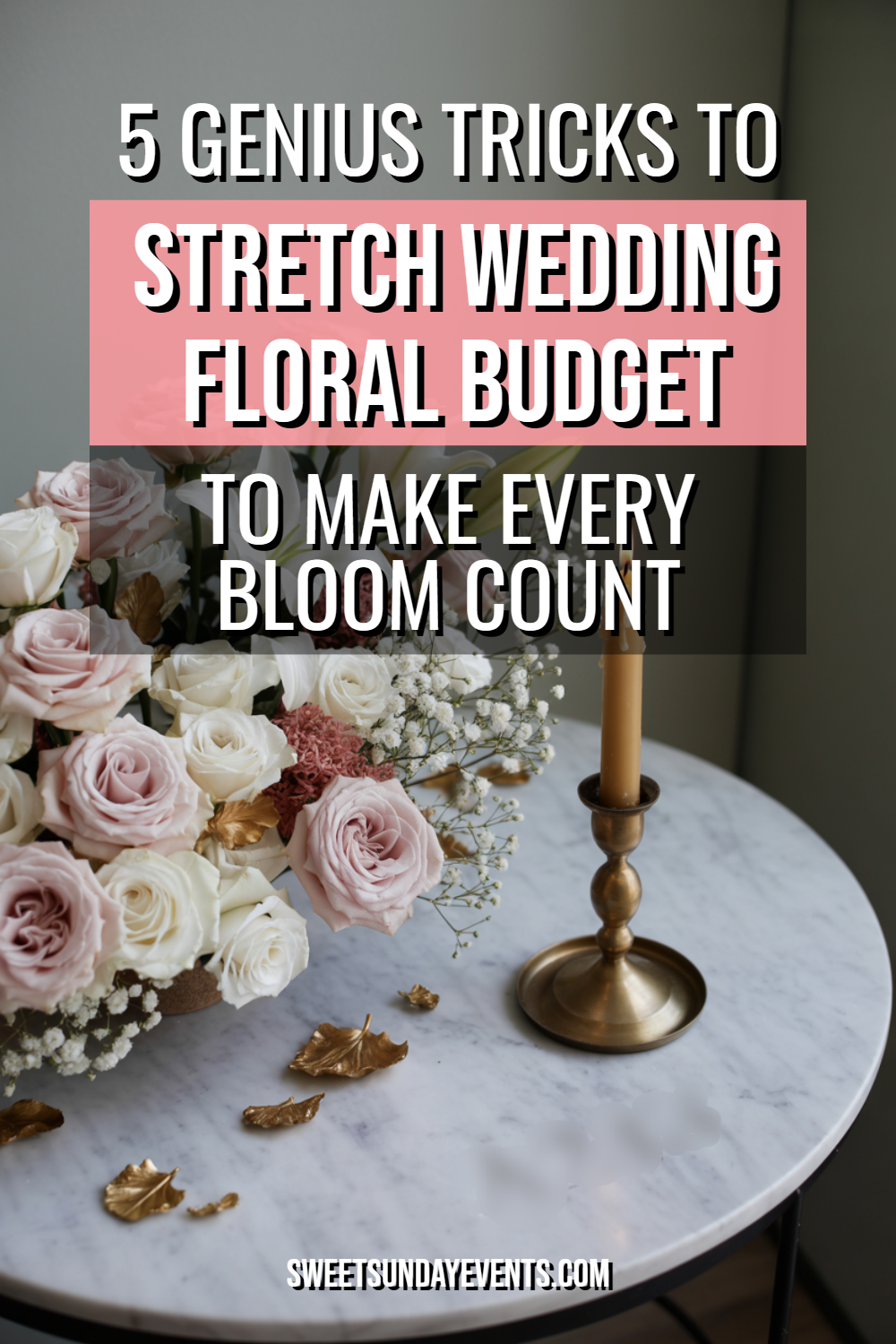Wedding flowers can devour your budget faster than your future mother-in-law can critique your centerpiece choices. But here’s the thing—stunning florals don’t require a trust fund, just some strategic thinking and a willingness to get creative.
1. Master the Art of Strategic Substitution
Swap expensive blooms for budget-friendly alternatives that deliver the same visual impact. Hydrangeas can mimic the lush fullness of peonies at a fraction of the cost, while stock flowers create the same romantic, cottage-garden feel as pricier garden roses.
The secret lies in understanding flower shapes and textures rather than getting fixated on specific varieties. A skilled florist can create arrangements that look like they cost twice as much by mixing affordable base flowers with just a few statement blooms.
Choose Flowers by Season, Not Pinterest
Seasonal flowers aren’t just cheaper—they’re fresher, more vibrant, and actually make more sense for your celebration. Spring weddings shine with tulips and daffodils, while fall ceremonies look stunning with dahlias and chrysanthemums.
Fighting the seasons means paying premium prices for flowers that have traveled thousands of miles and might still look tired on your big day. Embrace what’s naturally abundant during your wedding month, and your florist will thank you with better pricing.
Think Like a Florist, Not a Bride
Professional florists know which flowers photograph beautifully and hold up well throughout a long wedding day. Roses might seem basic, but they’re workhorses that look gorgeous from ceremony to reception and won’t wilt during your outdoor photos.
Delicate flowers like sweet peas are Instagram-worthy but notorious for drooping in heat or humidity. Save the fussy blooms for your bouquet where they’ll get VIP treatment, and choose hardier options for everything else.
2. Repurpose Everything Twice (Or Three Times)
Your ceremony arrangements shouldn’t disappear into storage after you say “I do.” Plan your floral design so that altar arrangements can seamlessly transition to reception centerpieces, and ceremony aisle decor can be quickly moved to the bar or cake table.
This strategy requires coordination with your venue and florist, but the savings are substantial. You’re essentially getting double duty from every arrangement, which can cut your floral budget nearly in half.
Create a Repurposing Timeline
Work with your florist to design arrangements that can be easily transported and repositioned. Ceremony arrangements in weighted vases can be quickly moved during cocktail hour, while altar sprays can be broken down into smaller reception pieces.
Bridesmaids’ bouquets make beautiful reception decor when placed in simple vases around the venue. Even your bridal bouquet can pull double duty as part of the sweetheart table design after the ceremony photos are complete.
Design for Dual Purposes
Choose arrangements that look intentional in multiple settings rather than obviously repurposed. A tall ceremony arrangement should be designed to work equally well as a reception centerpiece, not look like it’s lost in translation.
This might mean avoiding ultra-specific ceremony elements like aisle runners attached to arrangements, or designing pieces that can be easily separated into smaller components for the reception.
3. Focus Your Flower Power on High-Impact Moments
Not every corner of your venue needs florals—concentrate your budget on the spots where flowers will make the biggest visual impact. Your ceremony backdrop, reception entrance, and guest tables are prime real estate for your floral investment.
Skip the bathroom arrangements and random corner decorations that guests barely notice. Those small touches might seem important during planning, but they’re easily forgotten and rarely photographed.
Prioritize What Gets Photographed
Your bouquet, ceremony backdrop, and reception centerpieces will appear in countless photos for years to come. These are worth investing in because they’ll be part of your wedding memories forever.
Meanwhile, cocktail hour arrangements and restroom flowers are lovely but fleeting. Guests spend minimal time in these spaces, and they rarely feature prominently in wedding photography.
Create Focal Points, Not Floral Wallpaper
One stunning arrangement draws more attention than three mediocre ones scattered around the same space. Choose fewer locations for flowers, but make each one spectacular enough to serve as a focal point.
This concentrated strategy also makes your venue feel more intentionally designed rather than randomly decorated. Guests’ eyes will be drawn to your beautiful floral statements instead of distracted by floral noise.
4. Embrace Non-Floral Fillers and Greenery
Greenery costs significantly less than flowers but provides essential volume and texture to arrangements. Eucalyptus, ferns, and ivy can stretch your floral budget while adding sophisticated, organic elements to your design.
Mixed with just a few key blooms, abundant greenery creates lush, expensive-looking arrangements at a fraction of the cost of all-flower designs. Many trendy wedding styles actually emphasize greenery over flowers anyway.
Incorporate Natural Elements
Branches, berries, and interesting foliage from your own yard (or a willing friend’s landscape) can supplement professional arrangements beautifully. Just clear any DIY additions with your florist first to ensure they’ll work with the overall design.
Pinecones, acorns, and seasonal branches add texture and interest without adding cost. These elements also photograph beautifully and can make your arrangements feel more personalized and unique.
Use Candles and Non-Floral Decor
Mixing flowers with candles, lanterns, or other decorative elements reduces the number of blooms needed while creating more visual interest. A few flowers surrounded by pillar candles can look more dramatic than a larger floral arrangement.
Books, vintage bottles, or family heirlooms can serve as interesting bases for smaller floral arrangements, stretching your flower budget while adding personal touches that pure floral arrangements can’t provide.
5. Time Your Flower Purchases Strategically
Florists often offer better pricing for weddings booked during their slower seasons or on less popular days. A Friday or Sunday wedding might come with automatic floral discounts compared to Saturday celebrations.
Similarly, avoiding major floral holidays like Valentine’s Day, Mother’s Day, and prom season can result in significant savings. Flower prices spike during these periods, and florists are often too busy to negotiate on pricing.
Book Early for Better Rates
Florists appreciate clients who book well in advance because it helps them plan their seasonal orders and staffing. This advance planning often translates into better pricing for couples who aren’t making last-minute requests.
Early booking also gives you more flexibility in flower choices since you’re not competing with other events happening the same weekend. Your florist can focus on creating exactly what you want rather than working around limited availability.
Consider Wholesale Options
Some areas have wholesale flower markets that sell to the public, allowing you to purchase flowers directly and arrange them yourself or hire a day-of florist for assembly. This option requires more work but can result in substantial savings.
Wholesale purchases work best for simple arrangements and couples comfortable with some DIY elements. The savings can be dramatic, but you’ll need backup plans in case flowers arrive damaged or different than expected.
Making Your Floral Dreams Reality
Smart couples know that beautiful wedding flowers are about strategy, not just spending. These tricks help you allocate your floral budget where it matters most while still creating the romantic, photo-worthy celebration you’re dreaming of.
The best part? Your guests will never know you were working with budget constraints—they’ll just see gorgeous flowers that perfectly complement your special day.


